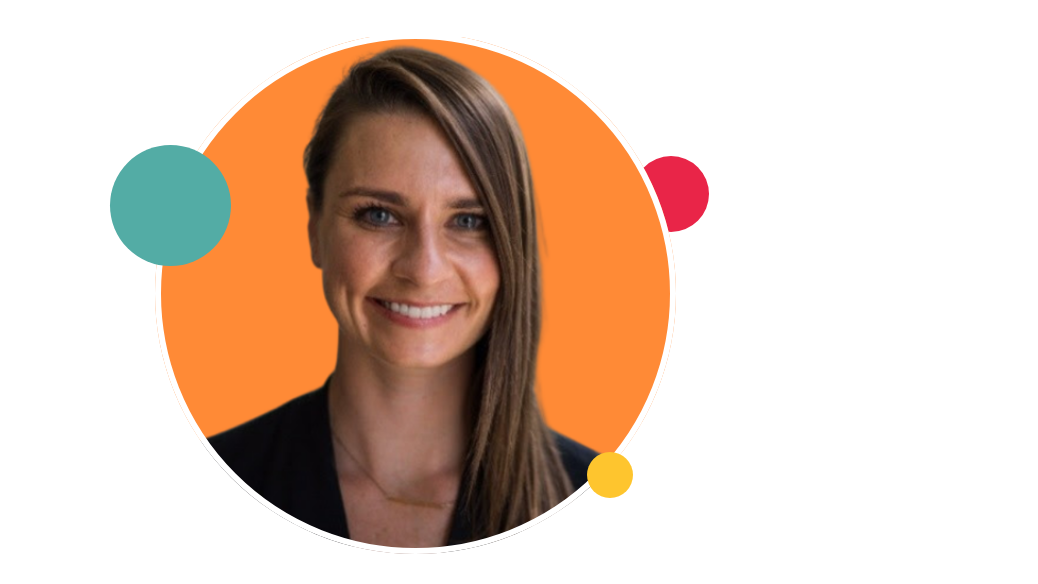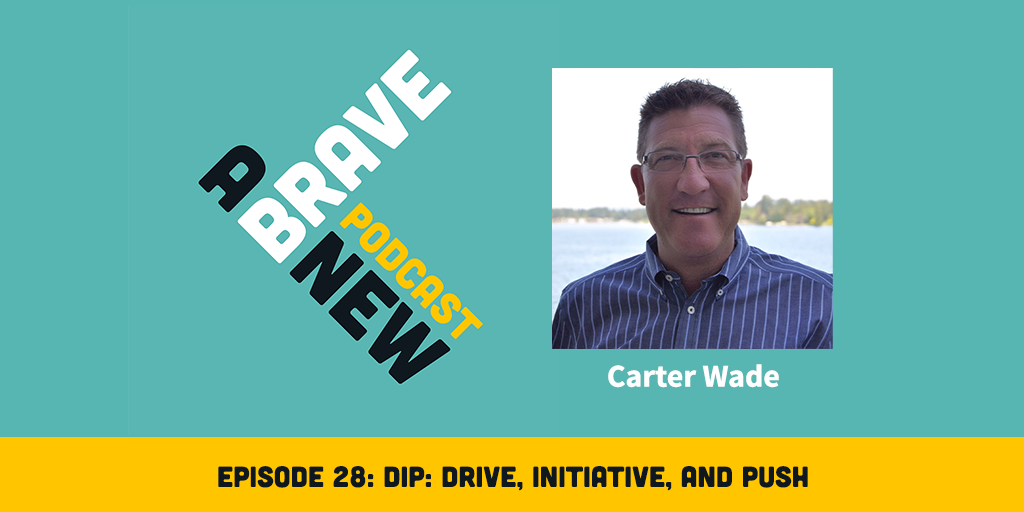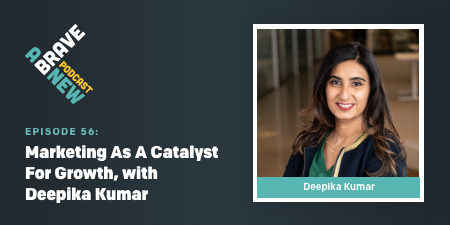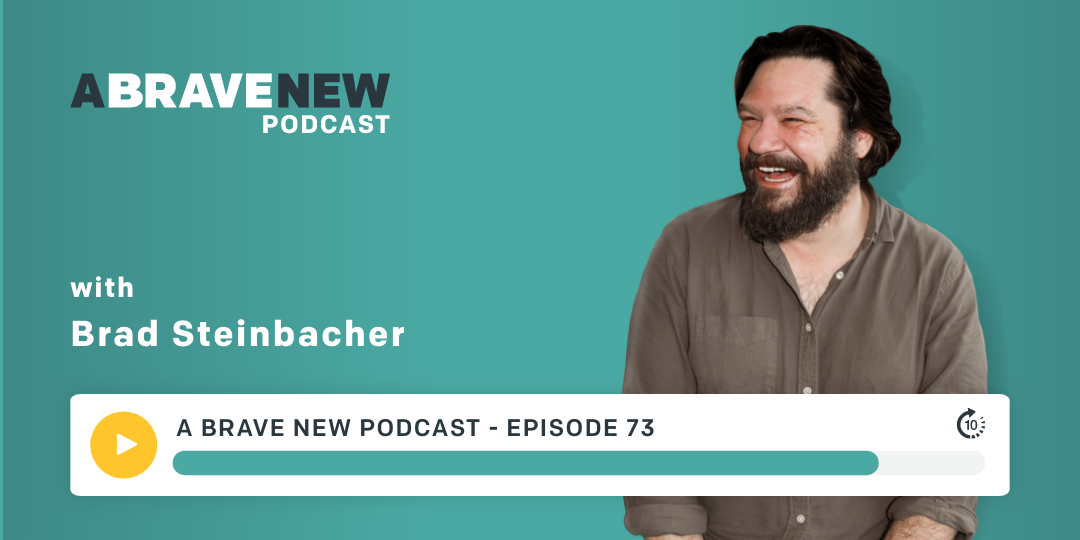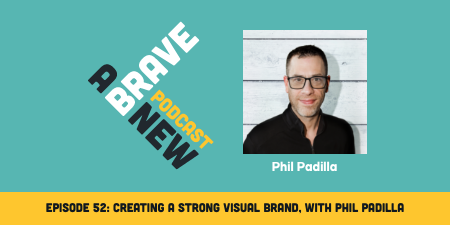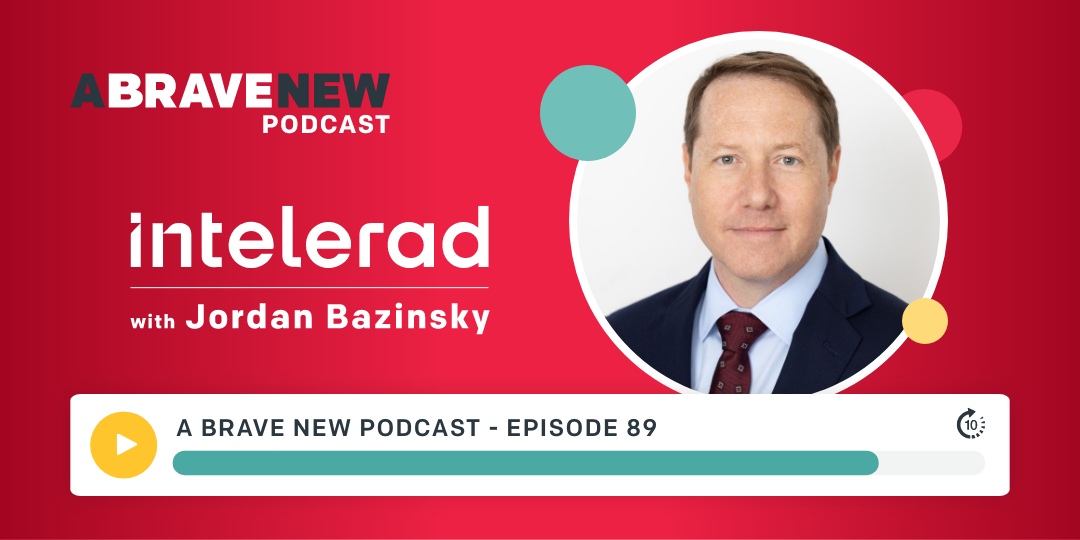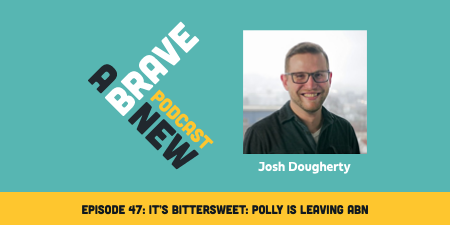Successful marketing and enterprise demand generation starts with community building. This is the foundation Jack Foster stands firm on. It’s been reinforced by 16 years of marketing experience, the majority of which has been spent spearheading marketing and demand gen efforts for some of the most innovative players in tech like Momentive (formerly SurveyMonkey) and Lever. Now as the Vice President of Marketing at WorkRamp, Jack is putting her focus on community building into action — and helping disrupt the established corporate learning and development industry in the process.
What you’ll learn about in this episode:
- How to use corporate learning as a competitive advantage in your marketing
- What it takes to create a leading brand in a fast-growing space…starting with redefining the learning management system category
- The benefit of community-building as a key pillar in your marketing strategy
- How to leverage customer communities to drive increased adoption and loyalty to your brand
- How Jack’s team drove 1000% year-over-year growth in blog traffic guided by a documented content strategy
- Jack’s thoughts about how marketers can succeed in an uncertain economic climate
Additional resources:
Transcript:
Josh:
Welcome to the show. I'm so excited to have you with me today. Today I'm speaking with Jack Foster. She's the VP of Marketing at WorkRamp. WorkRamp is an all-in-one learning platform, and they're doing a lot to innovate in the space of corporate learning. I think you're really going to appreciate the insights she brings on community building, on branding and demand generation and how you balance the two, on how to be open to change, and how to innovate.
So without further ado, I'd like to bring her into the conversation. Hey Jack, thanks for being on the podcast.
Jack:
Thanks, Josh. I'm excited to be here.
Josh:
Awesome. Well, I'm so excited to have our audience learn about your expertise, what you're doing at WorkRamp, all the thinking that you're doing, the cool strategies you're pursuing. But before we dive into that, I'd love to have you just share a little bit about your story, what you've done so far in your career, where it's taken you.
Jack:
Yeah, thank you for asking.
So I have been in tech for the last 15-plus years of my career, cut my teeth at a large enterprise company called CA Technologies. Started there in 2008 in marketing and held various positions in marketing there. It was a very interesting business model. While most of CA sold into Fortune 100 companies, I was part of a business unit that actually sold into SMB and mid-market, and we were 100% channel distribution. So we actually worked through a two-tier distribution model, sold through value-added resellers, LARs as well. And we sold into mid-market, back of room recovery software into mid-market and SMB companies. So, learned a lot about the channel and that role. A lot about marketing.
By the end of my time at CA, I was in my first leadership position managing the North America marketing team for our business unit. Kind of the interesting thing that happened for me there, which was definitely an inflection point in my career, was that we divested the business unit to private equity and really stood up like $100 million, I think 40,000 customers at the time, worldwide independent company. And so that was kind of my first look at what it meant to kind of work for a startup, but it wasn't really a startup because we had been established. But that was when I decided, okay, I'm living in San Francisco, I really want to go work for a venture-backed startup, see what this is all about, to build from the ground up.
And so I ended up landing at Lever, which at the time, was about a 60-person company. I was the first hire for our CMO for demand gen and marketing operations. There were about five of us on the marketing team when I joined. And I had the amazing opportunity to build the demand gen and marketing operations function from the ground up there. During my time there, we announced our series B to C. We were in super hypergrowth mode, we doubled ARR, doubled customer base, doubled employee base while I was there, and obviously got to learn a lot about building, got to build out the team. Had an amazing team of four marketers.
At that point, I'd been doing that for a while, and actually had the opportunity to move to a company that I'm sure many people have heard of before. SurveyMonkey was the name of the company at the time. It is now of course rebranded to Momentive. But it was super fun to go to SurveyMonkey. SurveyMonkey had built their entire business over the 20 years, before I joined, on the self-serve PLG motion. And when I was joining, it was really when we were going to be putting on the gas. They had started to put the gas on the enterprise motion. And so I got brought on to, again, do some building, built out the enterprise demand gen and marketing operations function there. Went from a team of about 3 to 25 over the course of my time there. The business went from 12% of the business was coming from enterprise. By the time I left, it was over 30%. So again, saw some really amazing growth at my time at SurveyMonkey.
And then that was when I decided to come to WorkRamp and take over the entire marketing team. And yeah, here I am now. So leading marketing at WorkRamp for the last year, a little bit more than a year now, and my team is responsible for everything from brand, product marketing, demand gen marketing, events, growth, kind of the whole shebang.
Gives you a little bit of history on who I am, where I come from.
Josh:
Nice, awesome. What I really like about your story is the, I think, emphasis on growing and on building things everywhere you've been. I think obviously that's a little bit inherent in this work in the technology and the startup environment. That's what everybody's doing, but you can tell from where you've been and I think where you are, from the conversation we had prepping this, of it's all about building something fun and cool and making a big impact in doing that.
So I'd love to hear a little bit about what you're building right now at WorkRamp. What are you passionate about, focused on today?
Jack:
Yeah, so we are out to build the best learning brand in the world. That's really our mission, one of our missions here at WorkRamp from a marketing perspective and from a brand perspective. And so when I think about our goals on marketing for the last year and will continue to be our North Star goals, we've really been focused on a couple of key areas.
The first is that we're out to redefine what the LMS means for a company. If you kind of think everybody knows what an LMS is, everybody's probably used an LMS, but we see the LMS as an opportunity to really propel your business forward. We look at learning, we look at when you invest in learning, you can really make your team and your business unstoppable. Learning can become a growth engine for your entire business.
And so LMSs, I think, have traditionally been thought of as maybe clunky, just kind of supporting some training. It's not necessarily been looked at as this super strategic investment. And, we're working with our customers, and we're seeing that when you do invest in learning, it actually can be one of the most strategic things that you could invest in as a business. And so we're out here to go tell that story.
And we power learning experiences across not just employees, but we have employee solutions and customer solutions, and so we're really looking at learning holistically across all of the stakeholders of your business. Again, which is a more unique spin on how you might traditionally think of an LMS. So, redefining the LMS, one of our big initiatives, and programming and a lot of resourcing in order to go out and tell that story.
Josh:
Awesome.
Jack:
Another big focus area, from a marketing perspective, is building community.
And so if you look back at WorkRamp's core, WorkRamp has always been invested in building customer community. It's really been in the DNA of WorkRamp from the beginning, always have had really strong customer advocates and strong customer relationships. A huge testament to, obviously, the relationship building and just the team that put that effort in.
But over the past several years, we've also been really focused on more intentionally building community for our customers. So that comes out in a lot of different ways, which we can go into in a moment here, but that's been a North Star goal for us as well.
Then the final thing I would say is that marketing, this past year, our team has really been focused on making an impact. And so I think this is not necessarily a new idea, but we are on the hook for pipeline and revenue. That's definitely the North Star that my team is always working toward and that we're measured against. And so how are we helping the company really reach the growth goals and business goals that we're out to achieve?
So those are kind of our three main areas from a marketing perspective, for sure.
Josh:
Yeah, I love that. I love the connection between learning and community too. It's such a natural, tight connection I think that is fun to market because who doesn't want to build community, right? Who doesn't want to help people learn?
Jack:
Yeah, yeah. Well, and it's tried and true. I know it's a buzzword right now in B2B community.
Josh:
Totally.
Jack:
All companies are saying they're doing community, but I also think that there's a lot of great examples out there of how companies that have invested in community, think of Gainsight, think of Gong, how they've been able to be super successful. And so I think it's definitely tried and true, if you can pull it off.
Josh:
Totally. Well, let's zero in a little bit on the corporate learning side and redefining what an LMS looks like.
Can you share a little bit about what's interesting to you about this idea of building a corporate learning brand or an LMS brand? I know, at SurveyMonkey Momentive, maybe it's about learning, but it's more about research, so it's a little bit different. What's interesting to you about that corporate learning brand? How do you grow that brand? How does it look different?
Jack:
Yeah. I mean, one of the things that I always look for in any role that I'm going to take is what does the customer ... How passionate are customers and how passionate are the buyers? And so, one of the things that I absolutely love about the corporate learning category, we sell into a lot of different buyer personas across the business. So if you think about top use cases, obviously people teams, learning and development, HR teams, huge use case. They're responsible for employee onboarding, employee career development, up-skill, re-skill, especially in today's environment. These are people that are thinking about how do you retain and grow your current employees?
And that's such a passionate group. They're so passionate about what they do. HR, in general, over the last ... I've spent a lot of time in HR tech between Lever, SurveyMonkey, and now WorkRamp. HR in general, is taking a more strategic seat at the table. And so it's so much fun working with HR buyers and seeing their passion and seeing what they're trying to do to transform their businesses.
And that's really true across a lot of our buyer personas. All of our buyer personas. Revenue enablement. Revenue enablement's another key persona we sell into. This is a newer function within organizations and it's really been a function that, as companies are growing and trying to refine their go-to-market motion, they realize that when they have enablement teams helping make their team go sell confidently, help train their team on how to position, how to objection handle, all the things that come with enabling sales to go out and be great, they're more confident and they just have better results. And so revenue enablement teams, they're really at the forefront of adopting new technology. They're really innovative, they want to try new things. And so it's really a fun, passionate group to sell into, to work with, to try new things with.
Customer education, kind of similar to revenue enablement, honestly. We sell into customer success, customer education teams. And again, CS has been on the rise now, especially in SaaS, over the last 10-plus years. You've seen that customer success is now a core function within organizations. Customer education is part of customer success. And again, they want to help customers be better, not only at using their products, but really be better at their jobs and help their customers to be successful.
And so it's just so fun in the corporate learning category because the people we're selling into, and working with, and marketing to, and our customers are just ... They're passionate group across all of these different groups. And, so, that's one of the things that I absolutely love about working in this space, for sure.
Josh:
Totally. And I think that passion leads to being able to build community really strongly, right? Because if you have people who are passionate, they're going to be willing to be more engaged in what you're doing.
And I know you mentioned how community is a really important part of your strategy, but I'd love to hear, it's one thing to say that, I guess I would say, and it's another thing to do it. So how are some ways that you guys are really proactively or intentionally building community with your customer base, with people who are in the space generally? What are the key things, your key strategies or key motions that you have in play to build that community and make it real?
Jack:
Yeah, that's a great question.
So again, going back to WorkRamp has really been invested in community, starting with our customers, for a long time. One of the things that we started to invest in a couple years back was actually every single customer that signs with WorkRamp is invited into what we call our VIP Customer Community. And, so, this is a Slack group that is the main way that we interact with customers, but they're invited in. It's an opportunity to not only stay connected to the WorkRamp team, but all of our customers are in there. So they're able to go ask questions on best practices. How are you approaching this challenge? What are your priorities? What are people working on? Great idea-sharing networking opportunities within Slack. They can stay connected to the WorkRamp team. It's a great way to keep the relationship just very open. Customers can Slack at any time, ask questions, and they get quick answers.
So that was the first big thing that was happening for customers when it comes to community, but we've built on top of that. We started doing, again, a couple of years back, I can't take responsibility for this, but I just think it's such an amazing investment that WorkRamp made, but we started to do what we call ... We call them internally our Lightning Strike Events, but externally, it's our product release events on a quarterly basis. Every single quarter our customers were invited exclusively to come get a sneak peek of what we're going to release this quarter. It was an opportunity to go hear from our CEO and other leadership members across the team, hear from our product team, and CTO, Arsh Mand. Our CEO is Ted Blosser. And they get the sneak peek, they get to see the innovation coming out of WorkRamp on a regular basis.
And at this event, there's so much enthusiasm, the chat is always popping off. It's a great way for people to just interact, again, ask questions, connect with each other. And so that's a program that we've done really, really consistently for customers for the past couple of years. And we started building on that even more this year.
This past year, we started to host a program called Peer Learning Workshop. So this is an opportunity for customers to come in a round table type of setting. We'd have different groups that were led by a facilitator, and again, tackling big questions that companies had. For example, when the Great Resignation was happening earlier this year, it was like, "What are you doing to retain and develop your employees?" And those are the types of questions that it's not really related to our product, but everybody's sitting down and really trying to understand, "Oh, this is a really great program or a tactic or whatever it is that some of our other customers are doing. Maybe I can take that back and do something at my own organization."
And it's really about adding value to our customers. If you're able to connect them with other people, if you're able to just add value and help them be better at their jobs, help their companies be better at what they're trying to achieve, you're going to build brand affinity. You're going to build a great relationship with your customers. And that's really the reason why we do these things.
Outside of customers though, we started to invest in the learning community at large this past year in a lot of meaningful ways. And so I'd say the main way that we've really started to, again, try to service the greater community has been through content. We've invested very heavily in our content strategy. And again, with the goal of some of the things I said, how do we help people be better at their jobs? How do we provide resources to tackle big challenges across the different buyers that we're working with?
And so content, I mean, there are lots of different ways that you can tackle content, but we are very invested in our blog and we work with customers to tell customer stories or share those insights so that people can just come, and if they have a question, hopefully we have an answer for them on our blog. We've invested very heavily in just sharing value on LinkedIn. So that's less about trying to capture demand on LinkedIn, it's more just, "Hey, here's some interesting tips or things that we're seeing in the market or insights," and just people scrolling. I spend a lot of time on LinkedIn myself. I get a lot of actual good marketing advice on LinkedIn. So that's kind of the goal: can we share great advice on LinkedIn? That's been something we've been invested in.
And then probably our biggest kind of flagship program that we launched this year from a content perspective was actually an event that we just did a month ago or so, just passed, but our first-ever WorkRamp LEARN Thought Leadership Virtual Summit, which again, was not really about our product. I mean, we did have some product announcement things that happened there, but, really, an opportunity for us to go bring value back to not only our customers but really anyone that is invested in learning and trying to accelerate their business.
So those are some of the ways that it's come out this year. And it's been a lot of fun. I mean, we've had a lot of fun in looking at all these opportunities.
Josh:
I love all the opportunities because they are so much conversational-driven that it's like you get to have this input from a huge group of people. I mean, certainly, I'm sure you produce amazing content and you do all that, but when you get that customer voice in there as well, it just makes it so much more exciting and more rich.
Jack:
Totally.
Josh:
Congrats to you for that and congrats on the event. I know coming out of that, it's still in the halo a month afterwards of like, "Oh, we actually did this," and haven't maybe thought about next year yet. So enjoy that halo.
Jack:
Oh, we're definitely thinking about next year. But no, you're right. We are in the halo. But the amazing thing about WorkRamp LEARN, I mean, it was a huge undertaking, for sure. Whenever you're putting on an event at this scale, there's a lot of thought that goes into it. But one of our goals was really around having not only just great content, but honestly, having a differentiated experience.
And so going back to what's community, there was so much engagement and customers talking to each other or prospects and customers talking to each other in the chat, wanting to learn from each other, sharing insights, or the reacting to things that were being shared on the big stage. We had even just delight moments within WorkRamp LEARN where we had a DJ, an amazing DJ. DJ Graffiti, Martin Smith is his name. He's incredible, just like delight moments. He got the crowd hyped, he kept the energy up for us throughout this virtual event, which is really hard to do in a virtual event, honestly. And that was a huge thing that we did to delight and bring the community together.
And then what's been really amazing is that now this event, which we put all this effort into, had all of these amazing customers speak at it and thought leaders speak at it, we're now able to take all of that content and that's fueling our entire content strategy for at least the next quarter and beyond. So taking all of our events, the different sessions, breaking those into video clips that we can share across different channels. We're doing blog recaps on every single session. Again, just highlighting all of the different insights that were shared through all the different multimedia.
It wasn't just about ... There is, obviously, the bringing together in the one day, but it's also going to fuel our content. And our bringing, again, that idea of bringing value to our community, it's helping us do that for this quarter and beyond as well. Yeah.
Josh:
Yeah. That's awesome. And I think it's a key principle of content strategy. How do we make our lives easier while still providing significant value?
So I'd be interested, I know you're probably deep into planning for 2023 and what that will look like, I think most people when they're listening to us, it will be 2023.
Jack:
Yes!
Josh:
But I'd love to hear what is upcoming for you from a content perspective as you're looking at trends and how you want to grow and build out what you're doing. You said you had invested a lot over the last year, and I think there's also always a pressure to do more and produce more. And I think that totally is part of what we do as marketers, but what do you think are those big trends that you're thinking of leveraging as you build out your brand and you build out your content in the coming year?
Jack:
Yeah, I mean, that's a great question. Honestly, our goals are going to stay the same as what I said in the beginning of this conversation. So we are still going to be out telling that story around why invest in learning, why is this so critical to the business, and how does an LMS power the learning experiences that you need to have for all of your different stakeholders? That's still going to be a North Star goal for us. We're still going to be investing in community, we're still going to be investing in content. And of course, marketing is still going to be on the hook to impact the business from a revenue perspective.
And so we are going to be looking at ... I mean, I think we've seen so much success with our content strategy from a couple of different ways. One, just more tactically speaking, our blog for example, has grown 1000%. Our traffic has grown 1000% year over year to our blog.
Josh:
That's amazing.
Jack:
And so we're seeing that people are interested in what we're talking about. We're seeing that we're able to provide value. It's obviously bringing traffic to our website. So we are going to be figuring out how can we continue to invest in our blog.
You'll see, again, thinking a little bit more tactically here but seeing things like more content across the different audiences and use cases and challenges. Multimedia is going to be a part of that. So we've started to invest in video to tell more of our story. We're thinking about things like maybe a podcast, different ways that we can really bring our story to life and so people can interact with our content and get it in whatever form that is best for them to receive that.
And also, just in general, I think our content, how can we distribute it more? So you'll see things like a newsletter, possibly, from WorkRamp or just other distribution channels because we're creating all this amazing content, we're seeing there's interest in it. So how can we get it out there even more than it is before? That's definitely going to be something we're thinking about.
Looking at WorkRamp LEARN, that's going to be another big part of our programming next year. When I looked at the results of our event, we were able to hit our registration goals. We were able to hit our live attendee goals. We had really great engagement from customers, people in the pipeline, deals in the pipeline, as well as net new prospects. And we had really incredible satisfaction ratings on the event. Of the people that actually ended up filling out the survey, 90% gave us a four- or a five-star rating on the event. So we look at this as, okay, we were able to bring value, people enjoyed this. How can we look at expanding this programming? So thinking about how WorkRamp LEARN, again, our flagship conference, how do we extend that program and expand that program into next year is definitely something we're thinking about as well.
And then we're, again, responsible for pipeline and revenue, and so really looking at the channels that are impacting those numbers. You have to create demand, honestly, to capture demand, right?
Josh:
Totally.
Jack:
We all know this in marketing. You can invest in paid search, but you're going to plateau at some point because it's really who is searching into the volume of search that you're able to actually capture. And so these things all work hand in hand. We need to be investing in these branding moments. We need to be investing in educating and bringing value to our community in order to continue to increase our contribution to pipeline and revenue.
Again, demand gen is obviously a big part of what we're going to be investing in, but these things kind of all go together in order for us to be successful.
Josh:
Yeah. There's a real balance and they both have to work symbiotically.
I'd love to hear what you're thinking about as demand gen strategies that are going to work in the next year. What are things that you're pushing on? I love the connection into pipeline. I know some marketers dislike this because it means that they aren't able to hand off MQLs or qualified leads and just say, "My job is done," but I do think it helps us do better work.
So where are you focused in the demand generation space? Because we talked a lot about brand, but ultimately, it comes down to dollars when you're probably sitting down with your executive team to justify the marketing program.
Jack:
Yeah. So I mean, demand gen, again, we did talk a lot about the demand creation because that is going to be what kind of fuels, ultimately, the demand gen long-term. But you're right. In the short-term, you have to be proving that the dollars you're spending on marketing are turning into pipeline and revenue.
It's really all about efficiency. I think that's probably the most common term being used in B2B across all, not even just marketing, but just business right now. It's like, how can you be more efficient? So we are definitely wanting to look for every dollar we spend, is that impacting our business goals? So that means optimizing channels, that means that we do want to continue to test into things, but we need to do that in a really smart and calculated way.
From a demand gen perspective, of course we're going to continue to activate on paid search. We are invested in SEO, and again, that's part of our content strategy, bringing traffic to our site. Once they get to our site, are we optimizing that experience? So we're making a lot of investments in our website to make sure we can actually convert the traffic that is coming to the site.
This past November, actually, we just launched a brand-new homepage and continuing to make investments to get people to spend more time on our site, to get people to go to more pages on our site. And so really, really looking at the data and seeing what's driving that type of behavior and continuing to tweak and optimize, that's a big part of our demand gen strategy overall.
We could go on, there's probably a whole other conversation you could have about this.
Josh:
Totally.
Jack:
There's everything from testing copy to testing chat to testing, but just looking at the different ways, even incrementally, that we can improve those experiences. It's all going to add up to what you're able to achieve.
And then of course, demand gen, I think sometimes to your point, marketers might stop at the, "Oh, I created a lead. That was my job." Well, a big part of my job and a big part of my team's job is partnering with our revenue organization and our sales organization. Are we looking at all the different conversion points? What can we do to optimize, to optimize the handoff? To make less friction in getting buyers on a phone call, getting them to the next stage? There's so many, you just ... Honestly, what it's really coming down to as I'm saying this is it's each conversion point, optimizing, optimizing, optimizing because I think everyone's going to be asked to do more with less right now. And so you have to maximize these opportunities in order to be successful. So that's definitely front and center for our demand gen team.
Josh:
Yeah. And you really have five to seven conversion points throughout the process. Right? So you've got to manage through all those.
What are some ways that you've built bridges and built success with your sales organization, the revenue organization? A lot of people are interested to hear about how other people are doing that, but what are ways that you've kind of built out that communication, made sure it's working well?
Jack:
Since I come from a demand gen background, I always have said demand gen is about as close to sales as you can get without being in sales. And in some cases, demand gen actually owns the SDR, BDR team, so you're almost half-sales. I've loved working with sales, and I've always valued the partnership there because it's just so true. You have to be working together in order to be successful.
I mean, the first way to do it, honestly, relationship building aside, is honestly to have the same goal. So that's why I think marketers have to be on the hook for pipeline and revenue because if you're all working toward the same thing and you're celebrating success the same way, that is obviously going to create alignment. And so first and foremost, it's aligning around, again, the same goals so that you're speaking the same language and working toward the same things.
So that's what we've done here. Pipeline and revenue, as I've said a couple of times now, is really how we're measured. But I think there's everything from, we do weekly check-ins with the partners on the BDR side where we're looking at things like quality of lead coming in, how did the meetings go? We measure things like first time to touch, so how quickly did the BDR follow up on this? How quickly did it move to a meeting? And just keeping that dialogue open, figuring out if there are things that are blockers, how can we unblock them? That's something that's happening on a regular basis.
We do monthly look backs where we share, "Here are all the trends and things that happened from a demand gen perspective. Here are trends we're seeing on our different channels, within our different personas." And again, just sharing the data, having conversations around it, holding each other accountable to the different things that we're responsible for.
I have really great partners, from a leadership perspective, who are we're always willing to tackle. We always tackle everything together. Again, with having shared goals, it kind of takes away the finger pointing because you're working toward the same thing. And so I think it's really important that you're always looking at accountability across the entire organization. Marketing is responsible for certain things and sales is responsible for certain things, but ultimately, if we're all responsible for pipeline, again, it just helps everybody get aligned and that's the best way to do it.
And there are so many ... You're hearing from me, there are tactical things you can do, of course, in the relationship building side, but I do think it really ultimately comes down to that goal setting for it to really work.
Josh:
I agree. Awesome. Well, this has been a really great conversation. I'd love to close out by asking a question I ask everyone and that's about superpowers. So what do you , Jack Foster, what do you think your superpower is?
Jack:
Honestly, I think my superpower is probably embracing change. I think I learned early in my career, like CA Technologies, when I was there, there was always a lot of change. We had a lot of leadership changes, there were a lot of organizational, structural changes. I mean, it was a huge company, like 14,000 people. Large, public company when I was working there.
And so early in my career, I just learned that you're going to need to be agile and be ready for things to change, and I think that's honestly helped set me up for success. And now, that was kind of dealing with internal changes, but now that we're in this environment of just like, we don't know what's going to happen. Nobody knows what's going to happen with the market. The news cycles can be distracting.
Josh:
Yeah, the world could change tomorrow completely.
Jack:
Exactly. I think that's probably my biggest superpower is just figuring out how to navigate through that. Not letting it be ... Not letting myself get too involved. It's kind of like, okay, what are we going to do to mitigate this or navigate through this?
So that's probably one of the things I'm most proud of and pride myself on is being good at being able to manage through change and be agile.
Josh:
Yeah, I love that. It's probably why you've had such a, I think, a cool and growing career because you can pivot when you need to. You can learn, you can ... I love that idea of change being this constant ability to kind of evaluate what's true now and then what do we do differently because of it.
Jack:
Thank you.
Josh:
Awesome. Well, how can people keep up with you online? What's the best way to hear about what you're doing, hear about the things you're thinking about?
Jack:
Please connect with me on LinkedIn, Jack Foster at WorkRamp. So definitely find me and connect with me on LinkedIn. And yeah, I share on LinkedIn and if you want to follow WorkRamp, we're very active on LinkedIn as well, so that's probably the best place and we'd love to hear from you.
Josh:
Awesome. Well, Jack, thanks so much for joining me today. Really great to have the conversation.
Jack:
Thank you. Thanks, Josh.
Similar Articles
OCT 11, 2021

The Beginner’s Guide to Generating Inbound Leads
Marketing doesn’t have to be painfully intrusive, like getting yet another telemarketing call right when you sit down to dinner with your family.
OCT 11, 2021

The Beginner’s Guide to Generating Inbound Leads
Marketing doesn’t have to be painfully intrusive, like getting yet another telemarketing call right when you sit down to dinner with your family.

